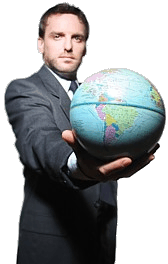What is the Oort Cloud?
 Michael Anissimov
Michael Anissimov
The Oort cloud is a huge spherical cloud of comets and dust that extends three light years from the Sun in all directions. The fact that the cloud is spherical rather than disc-shaped sets it apart from other collections of debris in the solar system, such as the asteroid and Kuiper belts. The sphere is so large that its edge is closer to our nearest star than to the sun itself. The edges of the Oort cloud generally represent the limits of the sun's gravitational influence — comets that stray too far from the edge get lost into space and become interstellar wanderers.
It is thought that almost every star has its own Oort cloud, of greater or lesser size. These clouds certainly overlap, and the Oort cloud of our sun likely overlaps with the cloud of Alpha Centauri. When the clouds overlap to the extent that the edge of a foreign cloud envelops another star, an above-average frequency of comets will be seen within the central regions of that star's solar system.

The Oort cloud was first theorized in 1950 when Jan Oort observed that there were no comets with orbits that indicate they come from outside the solar system, that there is a strong tendency for comet orbits to take them out as far as 50,000 AU (50,000 times the distance between the earth and the sun), and that these comets arrive and depart randomly in all directions. This led to the hypothesis of the Oort cloud, a cloud that cannot be directly observed with telescopes because the comets that make it up are too small and far apart. It is estimated there are about a trillion comets in the cloud, with a combined mass 100 times that of the Earth. It is theorized that Oort cloud objects actually formed relatively close to the sun, closer than Neptune's orbit, but were ejected into huge parabolic orbits when they were slungshot by the gravity wells of huge planets like Jupiter.
AS FEATURED ON:
AS FEATURED ON:











Discussion Comments
space beyond the atmosphere of the earth is space.
Could the Oort cloud pose as a potential hazard for inter-stellar travel in the future?
can people travel out to the oort cloud?
What is space?
Post your comments